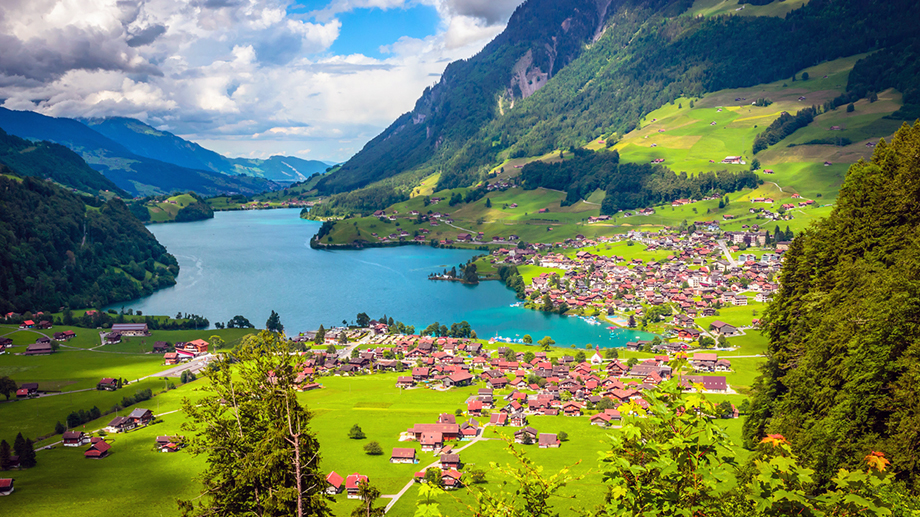Jan 10 2020
Biodiverse ecosystems are known to function better, compared to monocultures. At the University of Zurich, ecologists have currently demonstrated that the same holds true on a larger level.
 A mosaic of grassland, forest, urban areas, and water bodies makes landscapes more productive. Image Credit: istock.com/Olena_Znak.
A mosaic of grassland, forest, urban areas, and water bodies makes landscapes more productive. Image Credit: istock.com/Olena_Znak.
Having a combination of different land-covers such as forest, water bodies, grassland, and urban areas, enhances both the stability and functioning of a landscape—regardless of the climate, region, and the diversity of plant species.
Until now, research on biodiversity mainly considered the number of plant species existing in ecosystems.
Most studies so far have used small, artificially established study plots. However, real-world landscapes are much more complex, and, in addition to natural areas, also contain human-dominated elements such as arable land and urban areas.
Pascal Niklaus, Professor, Department of Evolutionary Biology and Environmental Studies, University of Zurich
Analysis of 5,000 Swiss Landscapes
A team of researchers examined the way different areas of land-covers impact the growth of vegetation in huge landscapes. The team was headed by professor Niklaus and part of the Research Priority Program “Global Change and Biodiversity.”
Through aerial imagery, the researchers evaluated land-cover in 4,974 landscape plots from all parts of Switzerland. Apart from green areas including forest and grassland, the researchers also considered human-dominated regions such as arable fields and settlements. Simultaneously, they utilized satellite data to discover the productivity of plants in these landscapes over 17 years.
Land-Cover Mixtures are More Productive and Stable
We found that landscapes consisting of a mosaic of different land uses were more productive than the average landscape with uniform use.
Pascal Niklaus, Professor, Department of Evolutionary Biology and Environmental Studies, University of Zurich
This positive impact of the productivity and diversity of land use sustained over many climatic conditions, altitude ranges, and regions. Temporally more stable productivity was shown by landscape mosaics, meaning more diverse landscapes are capable of reducing the impacts of inter-annual climate change.
Different Mechanisms are at Play
The positive impacts of the diversity of land use were not associated with the number of plant species existing in these landscapes. This implies that regions with varying land use interact and enhance the functioning of the total landscape, in the same way different species of plants interact in a small vegetation patch, therefore boosting the functioning of the plant community.
In such large landscapes, novel mechanisms must be at play that do not operate in the small study plots traditionally examined in biodiversity experiments. The fact that mixed landscapes function better should not be understood to mean that natural areas should be fragmented by expanding urban settlements.
Jacqueline Oehri, Study First Author, Department of Evolutionary Biology and Environmental Studies, University of Zurich
The unique nature of these mechanisms is the subject of additional investigations. The study authors speculated that water bodies and urban areas, for instance, impact climatic conditions in their surroundings, and this may enhance vegetation productivity in these regions.
Strategies for Regional Planning and Landscape Management
How varied land uses are spatially interwoven thus encourages the functioning of landscapes, apart from the established advantageous effects of the diversity of high species. The new approach in this study makes it possible to analyze landscapes on a scale that applies to conservation policies and regional planning.